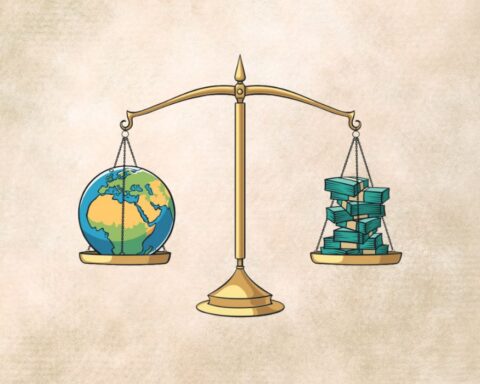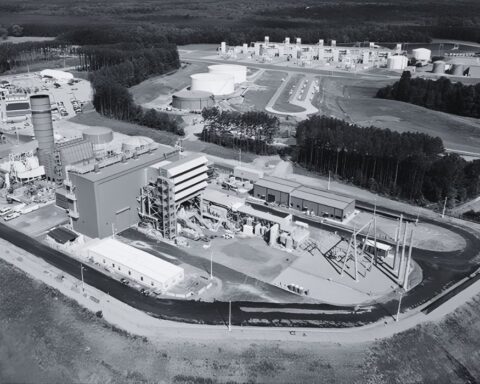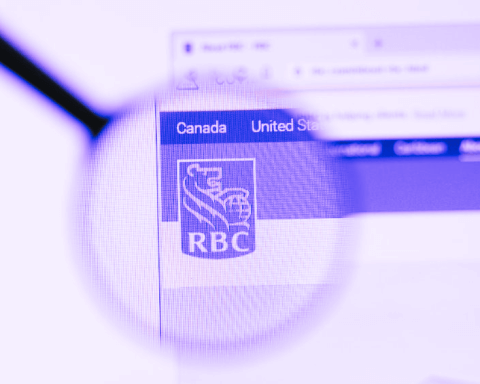So often when you read policy about the transition to a low-carbon economy like the Green New Deal, it’s presented as some ideal future state. Although we still have a long way to go, a new report I co-authored reveals the green economy is already here and now, to the tune of $10 trillion over the last decade.
Since 2009, I’ve worked with Ethical Markets Media to publish the annual Green Transition Scoreboard. Our latest report details more than $10 trillion of private investments in renewable energy, energy efficiency, green construction, corporate green R&D and life systems over the last ten years.
The full report, titled Transitioning to Science-Based Investing, contains many provocative thoughts from renowned futurist Hazel Henderson. Henderson reveals how science-denial is a huge source of financial risk in today’s markets, referencing the Network for Greening the Financial System’s Reporting for a Secure Climate that shows $1 trillion to $4 trillion in potential liabilities in the energy sector alone.
She says financial systems and global markets are still operating on “anthropocentric textbook formulas, erroneous views of ‘human nature’ and resulting obsolete models of risk, focusing on short-term monetary rewards. Since price data is always historic, they are often backing into the future looking through rear-view mirrors.”
It’s not all doom and gloom. Henderson takes her title of Futurist to heart, showcasing some truly inspiring developments in sectors like energy, water, pollution cleanup, and – my current favourite – sustainable agriculture. With so much buzz around Beyond Meat’s successful initial public offering (IPO), there’s lots of investor appetite for sustainable foods. We’re keeping our eye on everything from halophytes – plants that grow in seawater – to insects as a sustainable source of protein.
Here’s a quick breakdown of private investments to date since 2009:
| Green economy sector | Private investments (US$) |
| Renewable energy | $4,419,326,835,848.63 |
| Energy efficiency | $2,172,353,867,074.30 |
| Life systems | $1,948,093,945,463.00 |
| Green construction | $1,265,705,544,757.00 |
| Corporate green R&D | $581,798,094,434.02 |
| Grand total | $ 10,387,278,287,576.50 |
Renewable energy – Now at $4.419 trillion. Growing strongly, as fossil fuels become “stranded assets” and with the rise of electrification in transport.
Energy efficiency – Grew to $2.172 trillion, which reduces company costs and is the driver of the circular economy where many companies now compete to upcycle all kinds of previously ignored waste streams, for example, TerraCycle and ECOR. Efficiently using all resources creates widespread ripple effects (jobs creation, etc.) and will be central as electrification and better storage advance in transport and other sectors.
Life systems –Includes investments in water, land, remediation, waste and recycling, green infrastructure, which topped $1.9 trillion. The entire current global food system is being disrupted by a host of external forces. We forecast the continued acceleration of the current shifts in our global climate along with the further expansion of alternative plant-based foods and beverages. Also, the lowest hanging, viable shift will be toward salt-loving halophyte foods which can thrive on the planet’s 40% of degraded, desert land and 97% saltwater.
Green construction – This sector advanced strongly to $1.265 trillion, ranging from “low-tech” passive solar buildings to “high-tech” and new construction methods that use biomimicry, including copying the design principles that termites use to keep their mounds cool.
Corporate green R&D – Grew strongly to $581 billion. This sector is also heavily weighted in favor of automotive industries and their shift to electric vehicles, batteries, energy generation, conservation and distribution. Commitments are mostly from car companies’ R & D in electric vehicles and batteries.
Having tracked investments in green sectors for 10 years, I’m encouraged by the speed and scale of the growth that I’m seeing. For a long time, the knock on green sectors was that they weren’t economically competitive without subsidies. Now they’re competing despite a political shift toward populism that is not exactly friendly to the environment. Climate action-curbing politicians like Donald Trump and Doug Ford won’t stop the growth of the green economy, they can only slow it down. The climate crisis is quickly rising among voter priorities, and the political pendulum will swing back at some point, when these sectors will grow even faster.
There’s still much work to be done if we are to avert the worst-case climate scenarios and build a sustainable economy. Ten trillion is a major milestone, but it’s still just the beginning. We forecast continued acceleration of the current shifts in our global economy, and I’m excited to watch the numbers keep growing.
Tim Nash’s Sustainable Stock Showdown will return next week.







